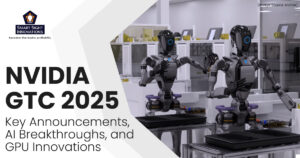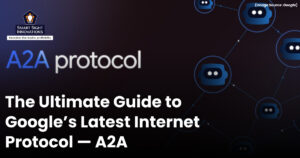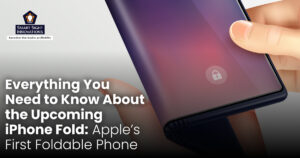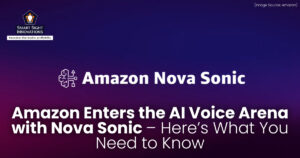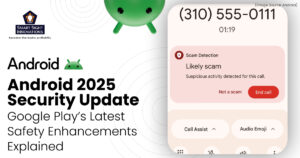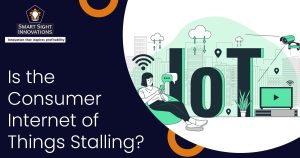 The consumer Internet of Things (IoT) was once heralded as the next big revolution, promising seamless connectivity and convenience in our homes and daily lives. From smart appliances to wearable devices, the possibilities seemed endless.
The consumer Internet of Things (IoT) was once heralded as the next big revolution, promising seamless connectivity and convenience in our homes and daily lives. From smart appliances to wearable devices, the possibilities seemed endless.
However, recent trends suggest that the consumer IoT market may be facing significant hurdles. Despite the initial hype, adoption rates have been slower than anticipated, and concerns over privacy, security, and interoperability persist.
In this article, we’ll delve into the current state of the consumer IoT industry, examining the challenges it faces, the reasons behind its potential stagnation, and what the future may hold for this technology.
What Is Consumer IoT?
The Consumer IoT refers to a network of physical devices, appliances, and gadgets embedded with sensors, software, and connectivity features that enable them to connect, collect, and exchange data over the internet. At its core, consumer IoT revolves around the concept of connectivity and data exchange among devices within a consumer’s ecosystem.
These devices can include smart home appliances like thermostats, lighting systems, and security cameras, as well as wearable devices such as fitness trackers and smartwatches. Voice-controlled assistants like Amazon Alexa and Google Assistant also fall under the umbrella of consumer IoT.
The key components of consumer IoT devices include sensors to gather data (e.g., temperature, motion, heart rate), connectivity options (e.g., Wi-Fi, Bluetooth) for data transmission, and embedded software for processing and interpreting data. This interconnected ecosystem enables users to monitor, control, and automate various aspects of their environment remotely through smartphone apps or voice commands.
Consumer IoT devices are aimed at improving user experiences by providing personalized services, optimizing resource management (e.g., energy consumption), and facilitating greater convenience and comfort. However, concerns over data privacy, security vulnerabilities, and interoperability challenges continue to influence the evolution and adoption of consumer IoT technologies.
Key Challenges That Have Stalled the Widespread Adoption of Consumer IoT
Consumer IoT technologies offer immense potential for enhancing everyday life, but they also present notable challenges. Addressing these key challenges requires collaborative efforts among IoT stakeholders, including manufacturers, policymakers, and consumer advocates.
1. Lack of Standardization
The lack of standardization across protocols, the languages devices use to talk to each other, creates a compatibility nightmare. Devices from different manufacturers often struggle to integrate, forcing consumers to deal with disconnected ecosystems instead of a unified smart home experience.
2. Security Concerns
Security vulnerabilities are a major concern for many consumers. News headlines about hacked smart devices being used to launch cyberattacks or spy on homeowners understandably raise doubts about the security measures in place. The potential for a compromised product to become a vulnerability in a home network discourages consumers from connecting everything to the internet.
3. Privacy
As the number of connected devices explodes, so does the amount of data they collect. This data can range from simple usage patterns to personal information like temperature preferences and security codes.
Consumers are increasingly wary of who owns this data and how it’s being used. The absence of clear data ownership policies and robust privacy regulations creates a sense of mistrust, making consumers hesitant to fully embrace consumer IoT.
4. Limited Functionality and High Costs
Many early consumer IoT devices offered limited functionality at a premium price point. A smart toaster that only toasts bread a specific shade of brown wasn’t exactly a compelling value proposition, especially when compared to a reliable and much cheaper traditional toaster. Consumers are hesitant to invest in devices that offer marginal benefits at a significant cost.
5. E-Waste Concerns
The rapid pace of technological advancement leads to concerns about e-waste. Many consumers worry that their smart devices will quickly become obsolete and end up in landfills, especially considering the often-limited upgradeability of these devices.
Additionally, concerns about planned obsolescence – designing products with a shorter lifespan to encourage frequent upgrades – further deter consumers from investing in a technology perceived as potentially disposable.
Some best practices that consumers can follow are:
1. Be Informed Before You Buy
- Don’t get caught up in the latest gadget craze. Research the functionalities, security features, and data collection practices of a device before purchasing.
- Look for user reviews that highlight security aspects and potential vulnerabilities.
- Ask yourself what data the device collects, who has access to it, and how it’s used. Look for manufacturers with transparent data policies.
2. Security Starts with Setup
- Always change default usernames and passwords on your devices. Use strong, unique passwords for each device and enable two-factor authentication where available.
- Just like your computer, keep the software and firmware of your connected devices updated with the latest security patches.
- Consider creating a separate Wi-Fi network for your IoT devices, isolating them from your main network where sensitive data may reside.
3. Be Vigilant Throughout Use
- Be mindful of the information you allow your devices to collect and share. Opt out of data collection practices you’re uncomfortable with.
- Keep an eye on your network activity to identify any suspicious connections or unusual behavior.
- Educate yourself about common security vulnerabilities specific to Consumer IoT devices. Regularly review your smart home setup, ensuring all devices are secure and software is updated.
- If you suspect a device is compromised or has vulnerabilities, don’t hesitate to disconnect it from your network.
- If you notice any suspicious activity on your devices or network, report it to the manufacturer and relevant authorities.
Where Consumer IoT is Actually Delivering Value
While the widespread adoption of Consumer IoT hasn’t quite materialized, there are pockets where this technology is delivering real value and enhancing people’s lives. Some of the success stories that demonstrate the potential of a well-designed and well-implemented consumer IoT are:
1. Smart Thermostats
Smart thermostats have emerged as a clear winner in the Consumer IoT space. These devices learn user habits and automatically adjust temperature settings, leading to significant energy savings. By optimizing heating and cooling cycles, smart thermostats can reduce energy bills and contribute to a more sustainable lifestyle. Users can also remotely control their thermostats, offering additional convenience and peace of mind.
2. Home Security Systems
Security systems have always played a vital role in safeguarding homes. Consumer IoT has taken this concept a step further by enabling remote monitoring and control. These systems often integrate with smart cameras and sensors, allowing homeowners to keep an eye on their property from anywhere with an internet connection.
This real-time monitoring can deter potential intruders and provide valuable evidence in case of a break-in. Additionally, features like smart locks and automated lighting can further enhance security measures.
3. Voice Assistants
Voice assistants like Alexa and Google Assistant have established themselves as valuable tools for managing a connected home. These devices offer hands-free control over various smart devices, from adjusting lights and thermostats to playing music and controlling smart plugs. Voice assistants can also be used to access information and automate tasks, streamlining daily routines and improving accessibility within the home.
4. Wearable Technology
Fitness trackers and smartwatches are gaining traction in the Consumer IoT market. These devices offer valuable insights into health and wellness by tracking activity levels, sleep patterns, and heart rate.
This data can help individuals set and achieve fitness goals, monitor their overall health, and even detect potential health issues. Smartwatches can also offer additional functionalities like contactless payments and notifications, making them convenient companions throughout the day.
These examples demonstrate that consumer IoT has the potential to improve our lives in tangible ways. When devices focus on clear functionalities, user-centric design, and security, consumers are more likely to embrace them.
As the technology continues to evolve and address existing challenges, the potential for consumer IoT to further integrate into our homes and enhance our daily lives becomes increasingly clear.




